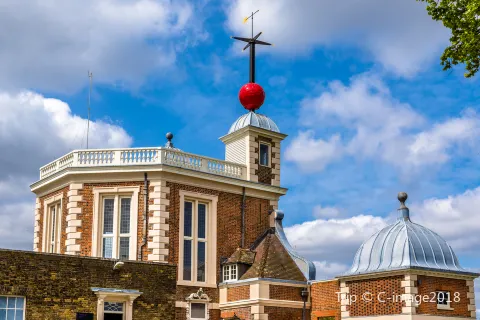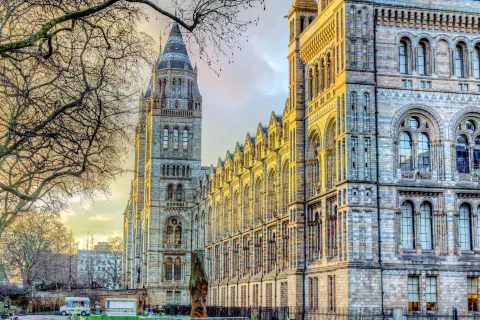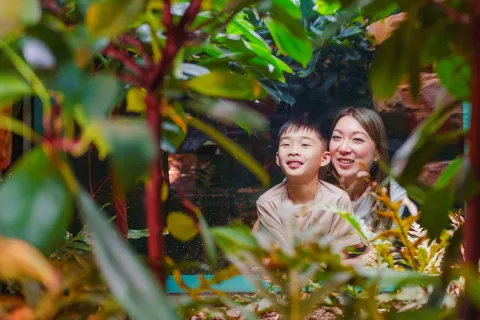https://https://uk.trip.com/toplist/tripbest/recommend/united-kingdom/best-family-friendly-attractions/10070020354130



Family-Friendly Attractions

Top 50 Family-Friendly Attractions in United Kingdom [2025]



Show All Photos

Royal Observatory Greenwich
4.6
/5
495 reviews
8.7
From IDR 526440

Based on 3,770 reviews
>100 km from downtown
Phone +442083126608
Address: Blackheath Ave, London SE10 8XJ, United Kingdom
Recommended sightseeing time: 2-3 hours

Selected for 2 years in a row
Highlights:
Greenwich Mean Time birthplace
Straddle East & West Hemispheres
Saved by 559 users287 positive reviews
Verified user reviews



Season (June-September): Plenty of sunshine, it is the peak season for tourism in the UK, with various art festivals and activities.
Spring and autumn: humid and rainy, relatively low comfort.
Winter (November-February): Few sunny days, low temperature, not suitable for outdoor activities, it is recommended to avoid.
Transportation in the UK
Train: convenient and comfortable, suitable for short trips.
Self-driving: high degree of freedom, suitable for long-distance travel.
🔹 Greenwich Observatory
🚢 Cutty Sark: It is said that there are some records related to China on the ship. If time is tight, a one-day pass is a good choice.
Historical records: The observatory preserves the deeds, measuring instruments and daily life records of past astronomers.
The Royal Observatory Greenwich is not only a scientific sanctuary, but also a place full of history and maritime stories. Here, you can feel the power of science up close. From the rise of the steam engine to the end of the Age of Discovery, to the invention of computers and the development of network technology, scientific progress has never stopped.
Geography enthusiasts must see it! ! ! ! ! You can get there by crossing a large lawn and climbing up a small hill. When you enter, you can use the Ctrip QR code. It is very interesting. You can see the history of clocks and watches, and learn how time zones are designed. Standing on the prime meridian, you feel like you are in a geography book.



Show All Photos

Blenheim Palace
4.6
/5
431 reviews
8.6
From IDR 679985

Based on 9,418 reviews
>100 km from downtown
Phone +441993810530
Address: Woodstock OX20 1PS, United Kingdom
Recommended sightseeing time: 2-4 hours

No.19 of Best Things to Do in United Kingdom
252 positive reviewsRecently viewed by 1,000+ people
Verified user reviews



The manor is located in a large park. The manor gardens are beautiful, and the lake is large enough to walk around. On summer weekends, you can see two horses being fed. The open areas within the manor building are quite beautiful.
I learned about the history of the Churchill family. The manor building is like a palace. Every room inside is luxurious. My favorite is the largest and longest library facing the beautiful riverside garden. The garden is well designed, and the walk along the river is quiet and beautiful!



Show All Photos

Chatsworth House
4.7
/5
142 reviews
8.1
From IDR 1063228

Based on 9,883 reviews
>100 km from downtown
Phone +441246565300
Address: Bakewell DE45 1PP, United Kingdom
Recommended sightseeing time: 3-4 hours

No.2 of Fall Viewing Attractions in United Kingdom
Saved by 113 users48% positive reviews
Verified user reviews



Absolutely fantastic. Would recommend the buggy ride around the garden. Our guide was very knowledgeable and friendly. The house and all the staff made you feel very welcome and relaxed.The markets are really good and have a very nice vibe and the house itself is decorated very well with a different theme every year. This year it's Henry and the Lion! The gardens are also lit up at night so definitely go for a walk after leaving the house if you have time. You will need to book tickets early ..
Chatsworth House is a must-visit for those interested in English heritage, art, and landscape design. Its grandeur, rich history, and scenic surroundings make it a memorable and enjoyable experience for all ages.
No.
4


Show All Photos

Natural History Museum
4.6
/5
426 reviews
8.0
South Kensington | >100 km from downtown
Phone +442079425000
Address: Cromwell Rd, South Kensington, London SW7 5BD, United Kingdom
Recommended sightseeing time: 0.5-1 day

Selected for 2 years in a row
Highlights:
Over 70k Earth & evolution exhibits
Explore Paleontology Fossils at the Dinosaur Exhibition Hall
Saved by 852 users233 positive reviews
Verified user reviews



Revisiting the Natural History Museum in London
The Natural History Museum in London, formerly the Natural History Department of the British Museum, officially became independent in 1963.
Climbing the magnificent spiral staircase, the mineral exhibition area on the right side of the second floor resembles a subterranean palace. Among the over 5,000 mineral specimens, the most stunning is the 3-meter-high amethyst wall—a perfectly cut amethyst cave from Brazil, shimmering with a dreamy purple glow under the light.
Here, nature is the greatest artist:
1️⃣ The legendary Hope Blue Diamond (replica), this 45.52-carat blue diamond carries a cursed legend.
2️⃣ The 563-carat "Princess of Brazil" topaz, like a beam of frozen sunlight.
3️⃣ The pigeon's blood rubies from Burma, each one a frozen flame.
Most magical are the fluorescent mineral displays: the stones, gray under ordinary light, suddenly burst into neon colors under ultraviolet light!
The meteorite exhibition hall houses the world's most complete collection of meteorite specimens. The most precious of these is the 4.5-ton Bakubiri meteorite, discovered in Namibia, Africa in 1902. Local tribes used it to forge spearheads. Touching these rocks from outer space allows you to feel the mysterious pulse of the universe.
-Don't forget to look up at the ceiling during your visit; the intricately carved botanical patterns are also part of the exhibits.
- Free guided tours are often offered on weekend afternoons; check the official website for specific times.
- From crystal palaces deep within the Earth to stardust gifts from the vast universe, this museum offers a glimpse into nature's most extravagant treasures. Here, every stone tells the story of Earth's 4.6 billion years.
Visiting this building is a beautiful experience in itself. The design of the high floor height is very beautiful. On rainy days, there are many visitors from all over the world, most of whom bring their children, and even local teachers bring their children to study. So many people are not particularly crowded in most cases and can breathe.
A museum suitable for traveling with children, with rich collections of natural, cosmic, historical, cultural, and geographical contents. Thank you Ctrip for recommending the blue card tour guide Zhao Chen, who is great, attentive and humble in communication. He can adjust the route according to interest or explain different exhibition areas in detail, and can also take us on a route that is not particularly crowded. Just be aware that mobile phone roaming may not be able to receive foreign calls, pay attention to the emails of the day, and it is very convenient to contact with WeChat.
No.
5


Show All Photos

University of Cambridge
4.6
/5
590 reviews
8.0

Based on 844 reviews
Cambridge City Center | >100 km from downtown
Phone +441223337733
Address: The Old Schools, Trinity Ln, Cambridge CB2 1TN, United Kingdom
Recommended sightseeing time: 0.5-1 day

Featured in Best Things to Do
Saved by 176 users215 positive reviews
Verified user reviews



Great to see the famous University buildings. Fantastic architecture.
Cambridge University is a place full of poetry and historical charm, known for its long academic tradition and ancient architectural style. Roaming Cambridge University is not only an academic journey, but also a cultural experience. Its heavy history, charming scenery, will be impressive.
No.
6


Show All Photos

LEGOLAND® Windsor Resort
4.6
/5
161 reviews
7.8
From IDR 702195

Based on 26,524 reviews
>100 km from downtown
Phone +441753626416
Address: Winkfield Rd, Windsor SL4 4AY, United Kingdom
Recommended sightseeing time: 3-4 hours

Selected for 2 years in a row
Highlights:
150+ LEGO models & rides
LEGO NINJAGO World Interactive Adventure
Saved by 251 users122 positive reviews
Verified user reviews



Tickets were issued quickly and the price was reasonable. A must-do for LEGO fans! You can take the 702 direct bus from Victoria Bus Station 7 for three pounds. The two-hour journey includes onboard charging stations and Wi-Fi. This bus also stops at Windsor Castle, so you can head there first.
All the rides start at 10 o'clock. The roller coaster 🎢 and the pirate ship are very exciting and fun. They are all lego elements. The children had a lot of fun. You can also eat lunch at noon. The rafting project will get you wet. You can wear a raincoat in advance. Children of 120cm can play all the projects. It is very cost-effective.
No.
7


Show All Photos

Royal Botanic Gardens, Kew
4.6
/5
167 reviews
7.5
From IDR 482570

Based on 9,507 reviews
>100 km from downtown
Phone +442083325655
Address: Richmond, United Kingdom
Recommended sightseeing time: 2-3 hours

Featured in 2025 Global 50 - Spring Outings
Saved by 336 users119 positive reviews
Verified user reviews



Here you can see a 17th-century British replica of the now-demolished Great Baoen Temple Pagoda in Nanjing. A few years ago, a Chinese company funded its restoration, and now every visitor to Kew Gardens has the opportunity to witness this magnificent example of Chinese civilization.
Entering the gardens is like stepping into a meticulously crafted museum of world plants. The magnificent Palm Conservatory evokes a tropical rainforest, with water lilies and leisurely Canada geese grazing by the lake creating a tranquil scene. The towering Treetop Walkway offers a fresh perspective, offering a bird's-eye view of the vast forest. The gardens also boast Chinese pagodas, artistic sculptures, and rare flowers. Conveniently located near London city, it's perfect for a half-day or full-day visit.
Admission is half price after 4 p.m., but the Treetop Walkway closes, and the glasshouses (conservatories) and galleries close at 5 p.m.
We recommend wearing comfortable shoes, walking slowly, and observing carefully to truly experience the tranquility and beauty of Kew Gardens.
No.
8


Show All Photos

London Zoo
4.6
/5
399 reviews
7.4
From IDR 669018
Marylebone | >100 km from downtown
Phone +443442251826
Address: Outer Cir, London NW1 4RY
Recommended sightseeing time: 2-4 hours

Selected for 2 years in a row
Highlights:
Wildlife adventure zone for interaction
Observe tigers and lions up close
Saved by 430 users303 positive reviews
Verified user reviews



lovely experience, had so much fun exploring the place and see different animals there. there is a coffee shop in there to take a break.
I was amazed with the London zoo and the way they've been trying to keep the animals of the past alive for the future for everyone to see if they go extinct also the work they have been doing in a breeding program in all sorts of animals and I would recommend it to anyone that visiting London with or without kids to give it a visit
No.
9


Show All Photos

Hyde Park
4.7
/5
692 reviews
7.3

Based on 22,639 reviews
>100 km from downtown
Phone +443000612000
Address: London, United Kingdom
Recommended sightseeing time: 1-3 hours

Featured in 2025 Global 50 - Spring Outings
Saved by 735 users312 positive reviews
Verified user reviews



Hyde Park was a delightful afternoon, the sun shining brightly, the lake clear, and the few visitors. The park itself is quite large, boasting a historic palace, white swans soaring in pairs, tourists leisurely basking in the sun, and adorable squirrels. The park has a natural feel, lacking any overt themes, simply offering a place to relax and experience nature. Once Britain's most renowned and largest royal park, it witnessed both the extravagance of the royal family and the progress of social civilization and the transformations of freedom and democracy. A spring visit should also offer a variety of flowers and plants.
There are many activities, you can choose the activities according to your preferences, the atmosphere is super good, it is worth a visit. There are also many things to eat, such as German sausages, roasted chestnuts, etc. There are so many things sold in the small market, you can choose what you like if you walk around slowly.
No.
10


Show All Photos

Castle Howard
4.7
/5
150 reviews
7.2
From IDR 329025

Based on 4,164 reviews
>100 km from downtown
Phone +441653648333
Address: Castle Howard, York YO60 7DA, United Kingdom
Recommended sightseeing time: 2-3 hours

Featured in Best Things to Do
45% positive reviews
Verified user reviews



It is a very worthwhile place to visit. The building itself and the collections are extremely low-key and luxurious. A family has accumulated wealth and art over several generations. The true aristocratic cultivation is really cultivated from childhood.
Business Hours: 24/7 Address: united kingdom Reasons to Recommend: comfy,gorgeous and comfortable and very clean city
1
2
3
4
5



